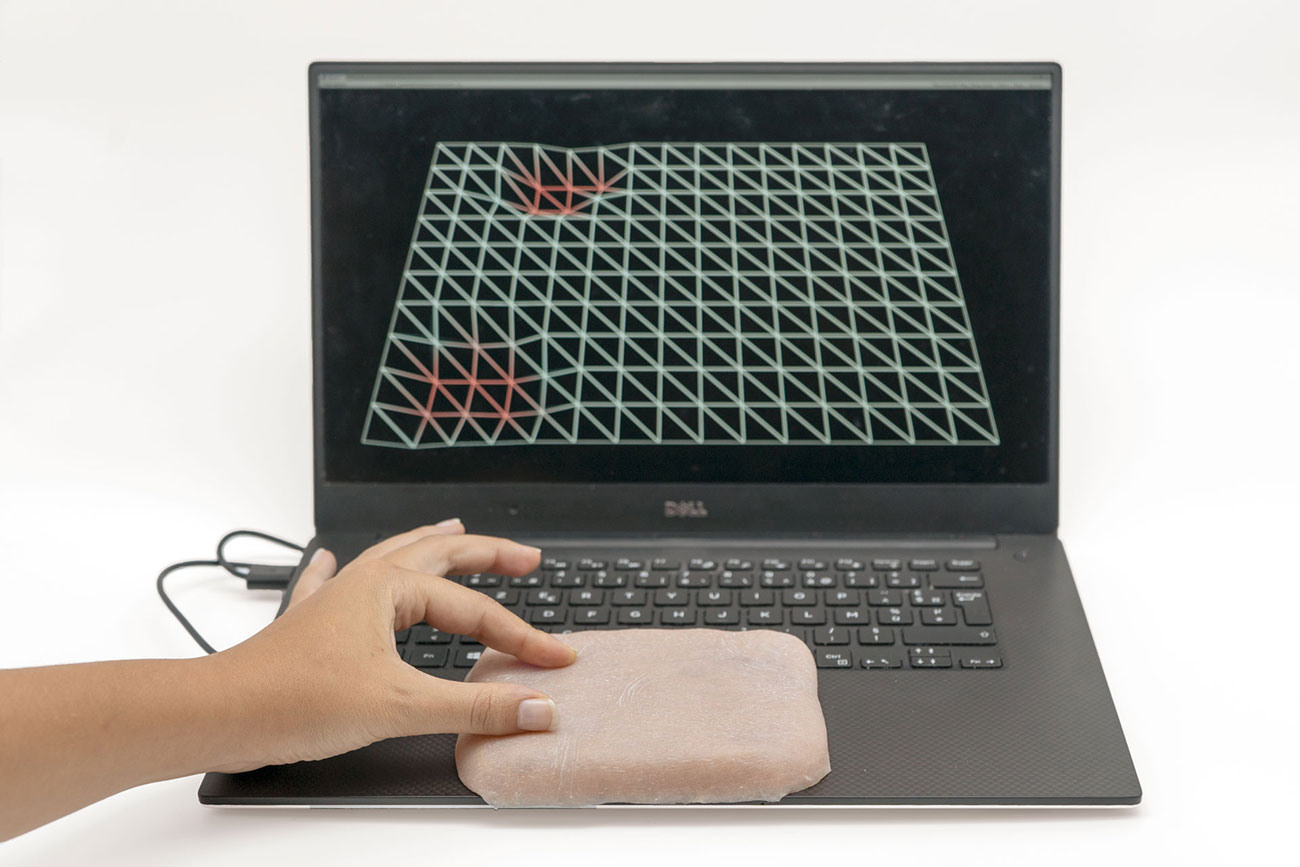Fleshy iPhone skin is the stuff of nightmares
Haven't you ever wished that your phone felt more like human flesh?
Getting an iPhone skin is a great way to protect your precious device from unexpected mishaps, but someone always has to go too far, right? This creepy skin not only looks like freshly-flayed human flesh, but it's designed to be pinched, stroked and tickled in order to provide more human interactions.
As reported in New Scientist, this weird piece of experimental design is the brainchild of HCI researcher and interaction designer Marc Teyssier and a team of researchers working at the Bristol Interaction Group. Teyssier notes that when we interact with others, we use their skin as interfaces – we're not entirely sure we agree with that premise – and the Skin-On Interfaces project is all about adding sensitive skin-like input methods to electronic devices.
For this Teyssier and his team have developed an unsettlingly realistic artificial skin that works in a similar way to real human skin, and it looks like an impressive piece of work. It's described as looking and feeling just like human skin, and it can sense not only multitouch gestures drawn across the surface, but also more complex manipulations such as stretching or grabbing.

The engineering element of it seems impeccable; the Skin-On Interface is layered in a similar way to human skin and definitely looks the part. And if the idea of fondling a hunk of ultra-realistic artificial flesh is just too gross for you to comprehend, they've produced a simple version that works just the same but doesn't look like it's been grafted onto your device from a human donor.
The team envisages the Skin-On Interface as being about more than interacting with your phone; they also see it being used on trackpads, smart watch straps and robots. Yeah, we can see where this is going.

We absolutely love the science behind all this, and we're always excited about new ways of interacting with devices – remember that a little over ten years ago, the idea of using a smartphone exclusively through a touch-screen seemed pretty unworkable, until Apple went ahead and did it anyway.
This, though, feels to us like one of those situations where they asked themselves if they could do something, without bothering to ask themselves whether they should. And while we don't doubt the team's motives, we reckon it's a pretty big ask to expect people to want to interact through an ultra-realistic human skin-like interface, no matter how sophisticated it is.
Get the Creative Bloq Newsletter
Daily design news, reviews, how-tos and more, as picked by the editors.

We're deep into the uncanny valley here, specifically the Cronenberg nightmare region. There are, we're sure, plenty of applications for realistic skin like this – most of them in medicine – but using it as an interface for your phone probably isn't one of them. If you want to know more – and we just know that you can't resist – there are plenty of details over at Marc Teyssier's site.
Related articles:

Thank you for reading 5 articles this month* Join now for unlimited access
Enjoy your first month for just £1 / $1 / €1
*Read 5 free articles per month without a subscription

Join now for unlimited access
Try first month for just £1 / $1 / €1

Jim McCauley is a writer, performer and cat-wrangler who started writing professionally way back in 1995 on PC Format magazine, and has been covering technology-related subjects ever since, whether it's hardware, software or videogames. A chance call in 2005 led to Jim taking charge of Computer Arts' website and developing an interest in the world of graphic design, and eventually led to a move over to the freshly-launched Creative Bloq in 2012. Jim now works as a freelance writer for sites including Creative Bloq, T3 and PetsRadar, specialising in design, technology, wellness and cats, while doing the occasional pantomime and street performance in Bath and designing posters for a local drama group on the side.
